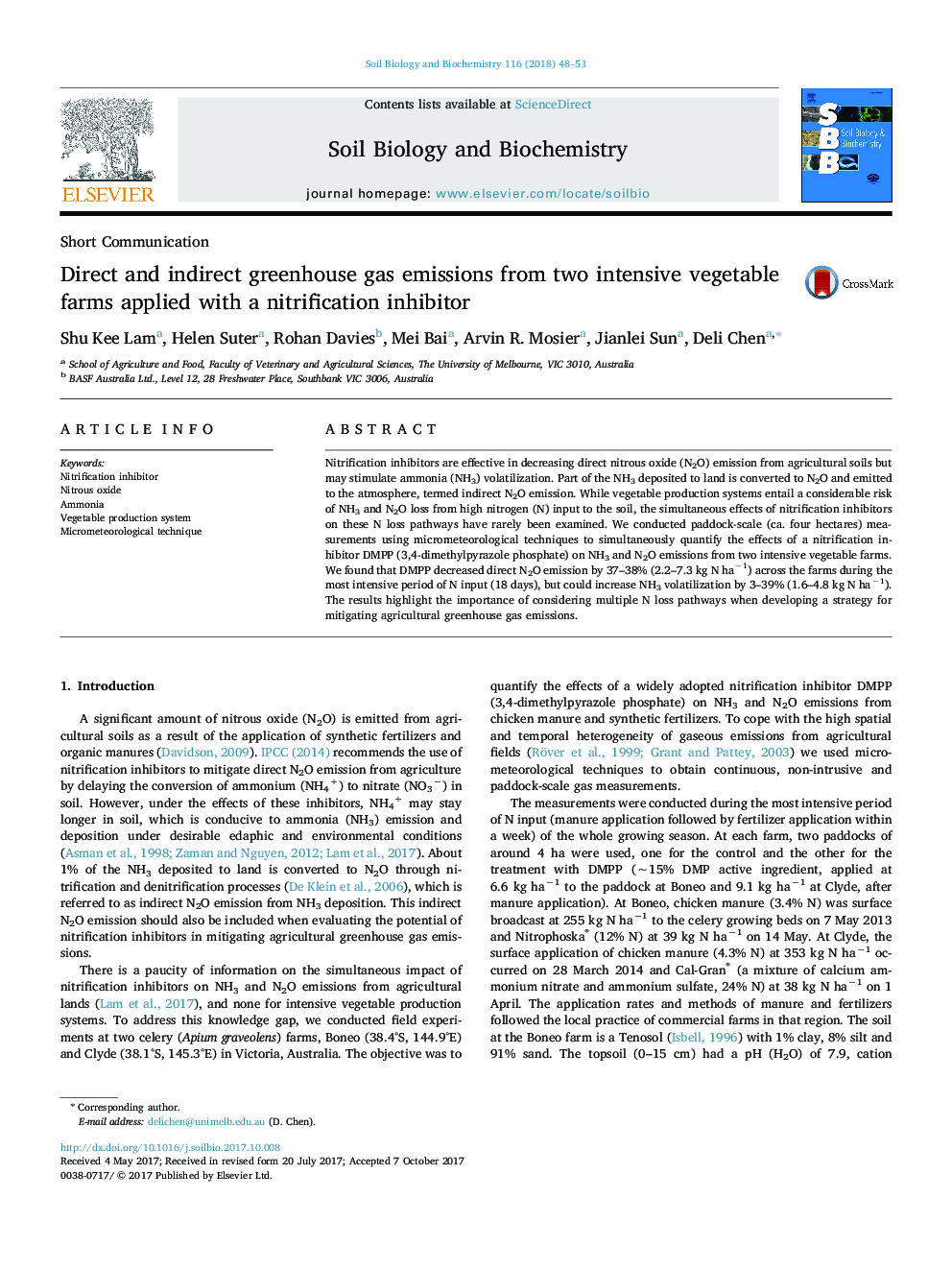| Article ID | Journal | Published Year | Pages | File Type |
|---|---|---|---|---|
| 8363111 | Soil Biology and Biochemistry | 2018 | 4 Pages |
Abstract
Nitrification inhibitors are effective in decreasing direct nitrous oxide (N2O) emission from agricultural soils but may stimulate ammonia (NH3) volatilization. Part of the NH3 deposited to land is converted to N2O and emitted to the atmosphere, termed indirect N2O emission. While vegetable production systems entail a considerable risk of NH3 and N2O loss from high nitrogen (N) input to the soil, the simultaneous effects of nitrification inhibitors on these N loss pathways have rarely been examined. We conducted paddock-scale (ca. four hectares) measurements using micrometeorological techniques to simultaneously quantify the effects of a nitrification inhibitor DMPP (3,4-dimethylpyrazole phosphate) on NH3 and N2O emissions from two intensive vegetable farms. We found that DMPP decreased direct N2O emission by 37-38% (2.2-7.3 kg N haâ1) across the farms during the most intensive period of N input (18 days), but could increase NH3 volatilization by 3-39% (1.6-4.8 kg N haâ1). The results highlight the importance of considering multiple N loss pathways when developing a strategy for mitigating agricultural greenhouse gas emissions.
Related Topics
Life Sciences
Agricultural and Biological Sciences
Soil Science
Authors
Shu Kee Lam, Helen Suter, Rohan Davies, Mei Bai, Arvin R. Mosier, Jianlei Sun, Deli Chen,
